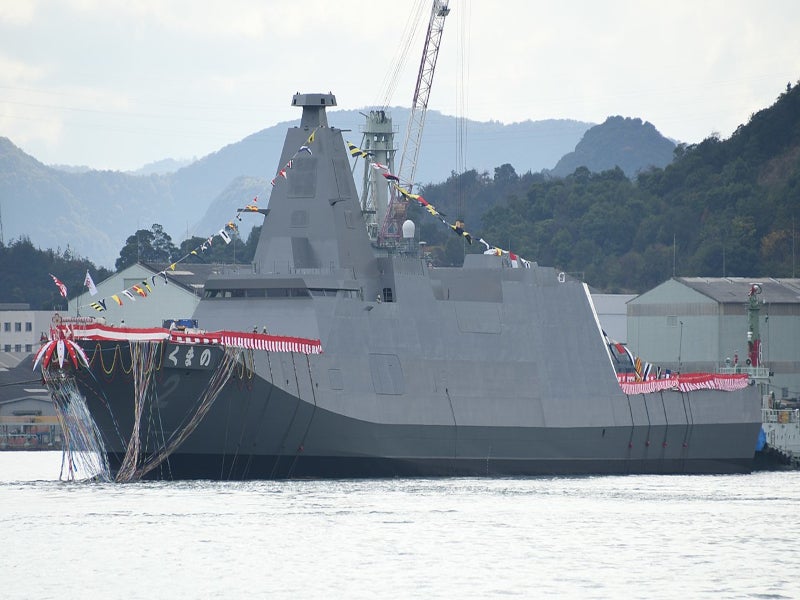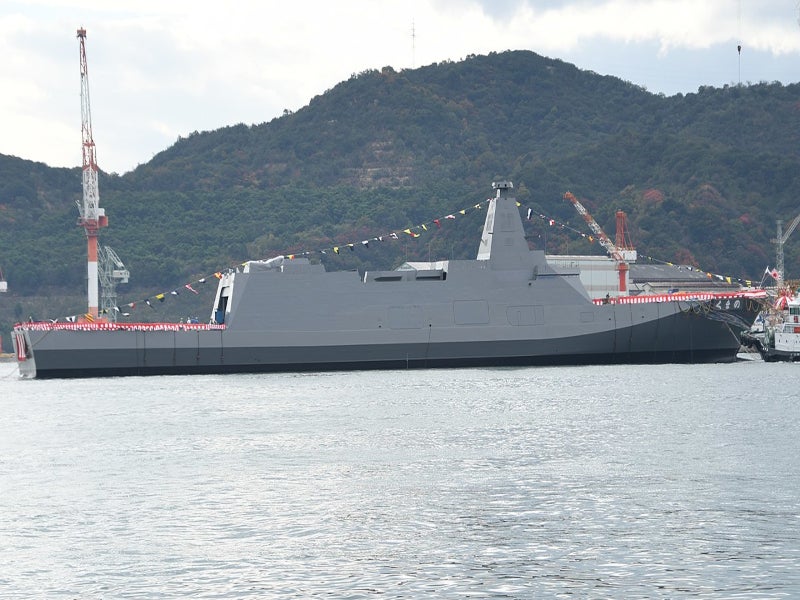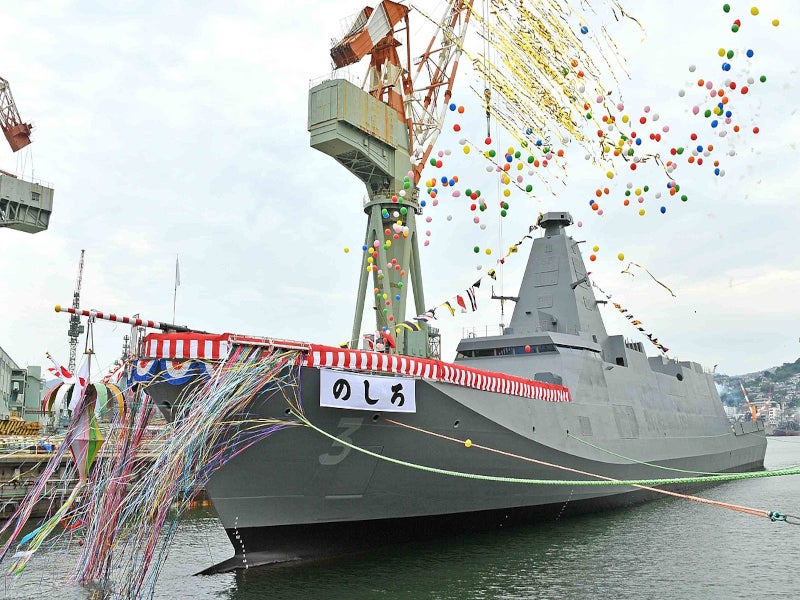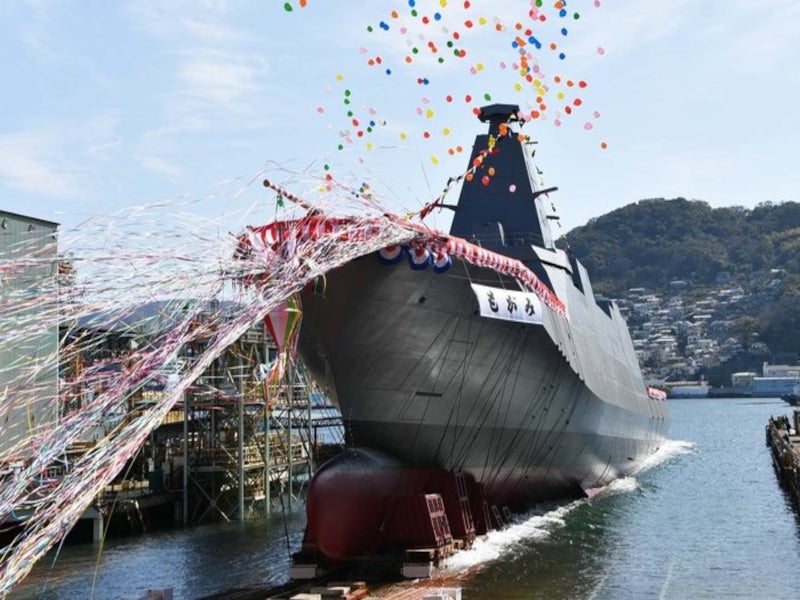Mogami-class frigates are being built for the Japan Maritime Self-Defense Force (JMSDF) to improve their deterrence and response to various situations, as well as other multi-mission capabilities.
The new frigates are expected to replace the ageing Asagiri-class destroyers and Abukuma-class destroyers of the JMSDF.
Mogami-class development
Japan’s Ministry of Defence (MoD) allocated funds to analyse the construction of a new compact-type hull destroyer with new radar systems and additional multi-functional capabilities in 2015.
Acquisition Technology and Logistics Agency (ATLA), an arm of Japan’s MoD, launched a new surface vessel programme named 30DX for the JMSDF in August 2017. ATLA selected Mitsubishi Heavy Industries (MHI) as the prime contractor, while Mitsui Engineering & Shipbuilding (Mitsui) was preferred as the subcontractor for the construction of the vessels.
The Japanese Navy intends to induct a total of 22 multi-role frigates. ATLA plans to build eight units in the first batch at an estimated cost of JPY50bn ($452.7m) a unit.
The first vessel of the class, JS Mogami (future multi-mission frigate (FFM)-1), was launched at MHI’s Nagasaki Shipyard in March 2021. Mitsui launched the second vessel of the class, JS Kumano (FFM-2), at its Tamano Shipyard in November 2020.
In March 2021, Japan signed a military co-operation agreement with Indonesia to deliver military equipment including up to eight new Mogami-class frigates to the Indonesian Navy.
The third Mogami-class frigate, JS Noshiro (FFM-3), was launched by MHI in June 2021. All the vessels are expected to be commissioned between 2022 and 2032.
Mogami-class frigates design and features
The Mogami-class frigate incorporates a new-generation stealthy design that will improve the affordability, miniaturisation, automation, and multi-mission capabilities of the vessel.
The stealth technology used in the vessels is based on MHI’s research and development from the Advanced Technology Demonstrator (ATD)-X Shinshin stealth fighter experimental aircraft.
The Mogami class will have a standard displacement of approximately 3,900t. Each frigate will have a length of approximately 130m and width of 16m. The small-size vessel will be manned by a crew of 90.
The frigate will feature MHI’s advanced integrated combat information centre (CIC) with multi-function consoles, tactile tables, and a large 360° circular screen wall, which will be able to show information from the wheelhouse and engine control room. It can also display the surroundings of the ship and utilise augmented reality technology to distinguish different structures or navigate the ship in the event of bridge or engine control failures.
The vessel will be capable of deploying and recovering unmanned underwater vehicles (UUVs), unmanned surface vessels (USVs), a helicopter, and sea mines.
Weapon systems
The new frigate will be armed with a BAE Systems’ Mark 45 127mm naval gun system, 16-cell Mk 41 vertical launching system (VLS) for surface-to-air missiles, and eight anti-ship missiles.
It will also feature remote-controlled weapon stations, torpedo and decoy launchers, and Raytheon’s SeaRAM short-range anti-ship missile defence system on the helicopter hangar.
Sensors and radars on Mogami-class frigates
The vessel will be fitted with a multi-function radar in an integrated mast, OAX-3 electro-optical and infrared (EO/IR) sensor system, OPY-2 X-band multi-purpose active electronically scanned array (AESA) radar, NEC OQQ-25 variable depth sonar (VDS), towed array sonar system (TASS), and a hull-mounted OQQ-11 anti-mine sonar from Hitachi.
The sensors and weapon systems of the frigate will be interfaced with the OYQ-1 combat management system (CMS) and OYX-1-29 information display/processing system.
Mogami-class propulsion
The frigates will be powered by a combined diesel and gas (CODAG) propulsion system integrating a Rolls-Royce MT30 gas turbine and two MAN 12V28/33D STC diesel engines.
The propulsion system will also include two shafts, two controllable pitch propellers, and a bow-thruster. The vessel will be able to sail at a maximum speed of more than 30k.







